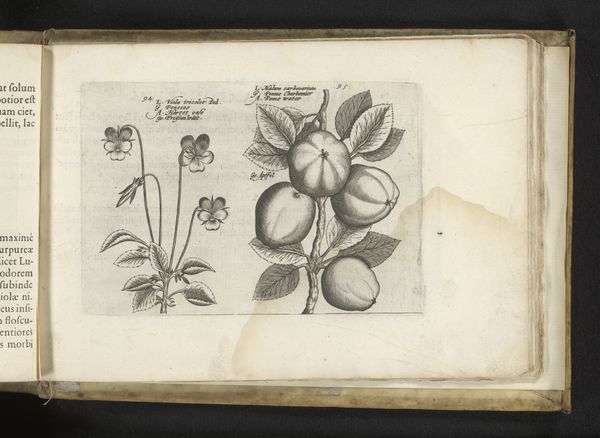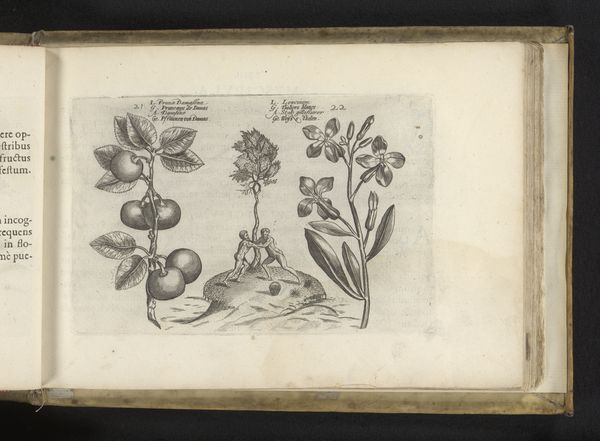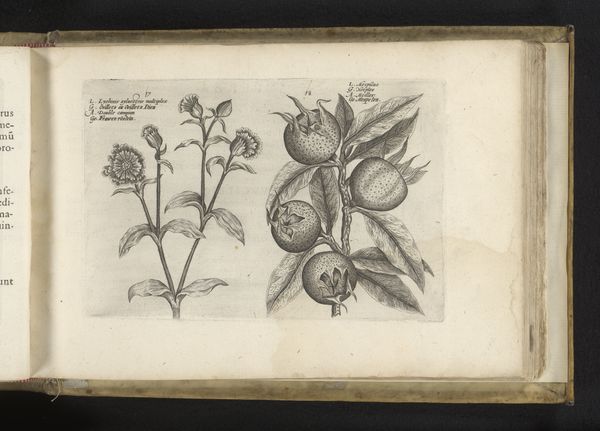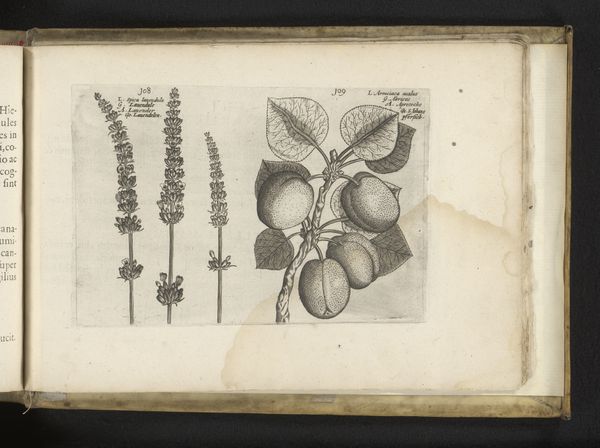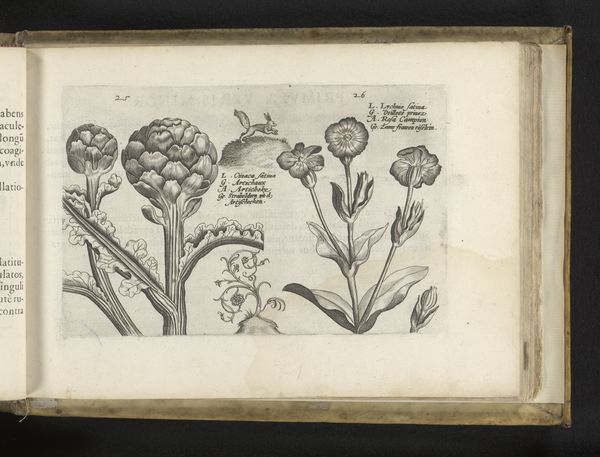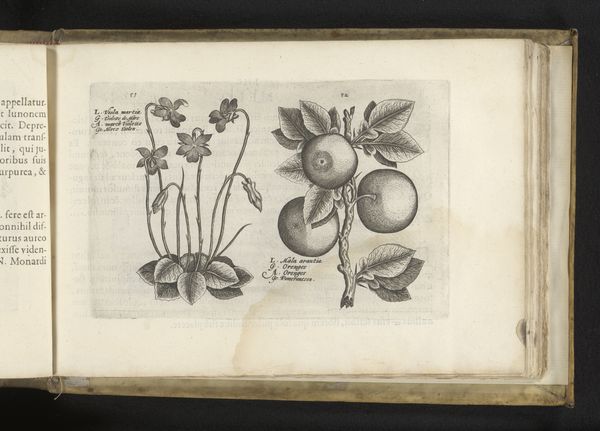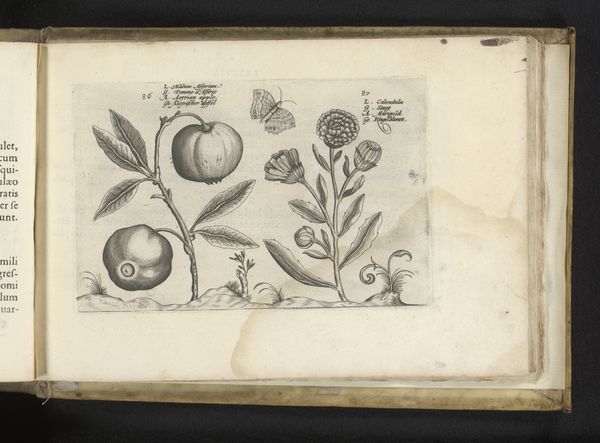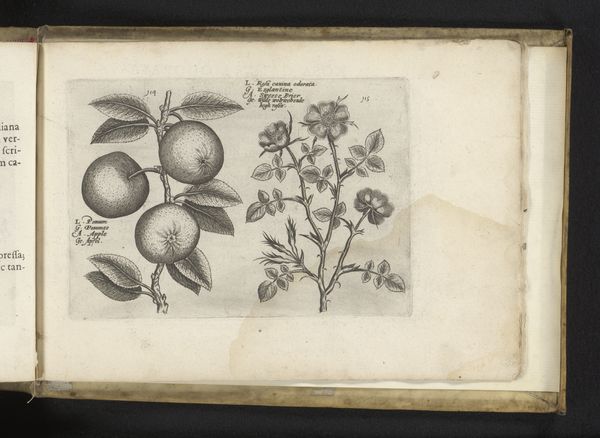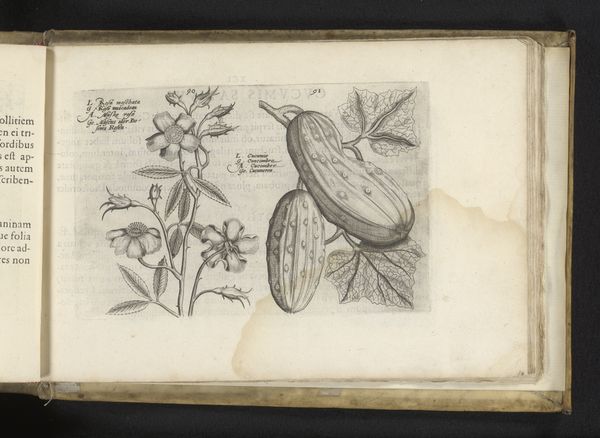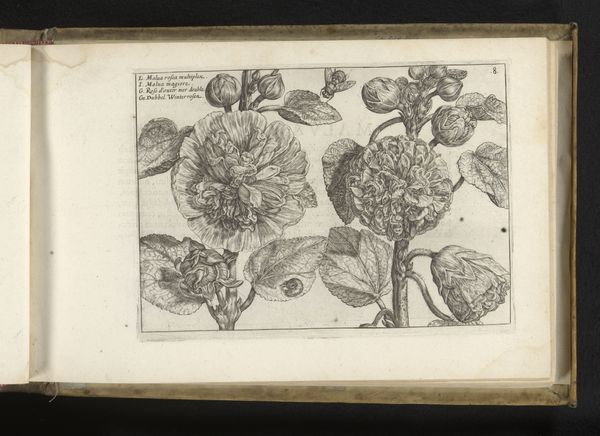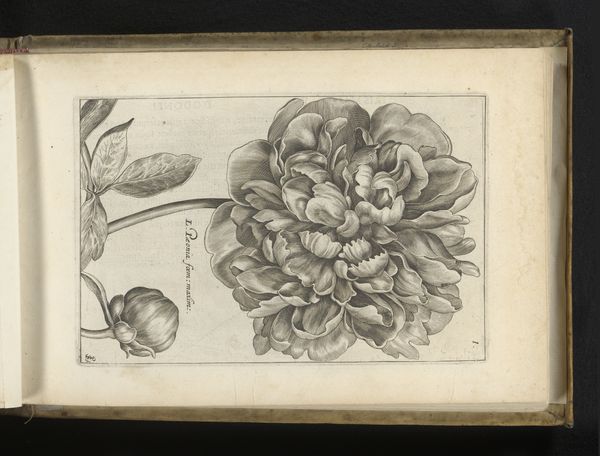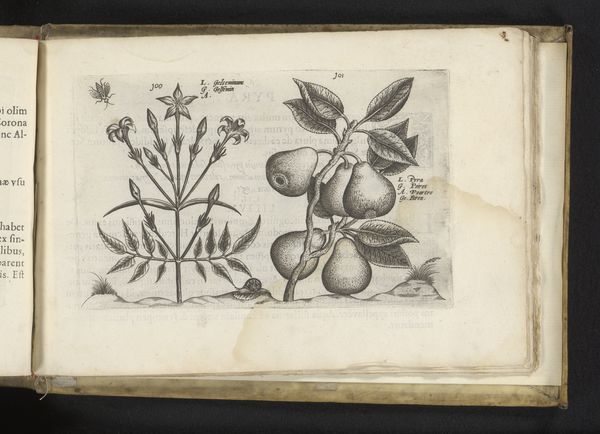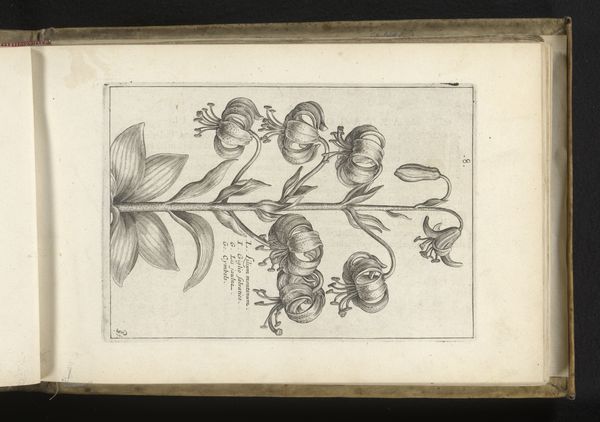
drawing, paper, ink, engraving
#
drawing
#
mannerism
#
paper
#
ink
#
northern-renaissance
#
engraving
Dimensions: height 129 mm, width 206 mm
Copyright: Rijks Museum: Open Domain
Curator: Here we have a striking engraving titled "Wijnstok met druiven," or "Vine with Grapes," created around 1617 by Crispijn van de Passe the Younger. It is currently held in the collection of the Rijksmuseum. Editor: It has such graphic clarity, stark black ink on paper, the grapes appear almost photographic, but still... lifeless. What is your take on it? Curator: I see the engraving first as a product. Given the context of early 17th century Holland, consider the labor involved, the availability of paper, the development of increasingly refined engraving techniques allowing for pieces like this to circulate among a burgeoning merchant class, many whom were directly involved in overseas trading and likely influenced by new and unusual commodities. Editor: But doesn't this piece engage in more than just simple distribution of commercial images? Look at the meticulous arrangement of the grapes, the density of the bunches contrasted with the delicate line work of the veins in the leaves. Curator: The subject matter wasn't random, either. Grapes were associated with wealth and abundance; an artist commissioned for such work needed both the financial means and, just as significantly, the patronage system that permitted the level of refinement we witness. Who could afford, and thus, who desired, this precise imagery? Editor: And note the Mannerist influence apparent here, a style that prioritized elegance and artificiality over naturalism. I see it specifically in the exaggerated curves of the vine and how that relates to Northern Renaissance ideas about perspective. Curator: Quite right. Even its medium–the ink itself—speaks to its social function. What kind of ink? Was it imported or locally sourced? Pigment research, I suspect, could give insights into wider trade and material supply channels active at that time. Editor: It’s a useful reminder. Seeing past the formal qualities also forces you to see what supported it as an item of display, and as an object, the work starts to transform. Curator: Agreed, by considering how it circulated through networks of commerce, from workshop to patron, gives more texture and nuance. It's much more than just an attractive drawing. Editor: And when examined purely for line and texture—that’s just a static arrangement. We now see, through the grapes, vines, and ink, a little world comes into focus, bearing witness to something unique that has happened with production.
Comments
No comments
Be the first to comment and join the conversation on the ultimate creative platform.
